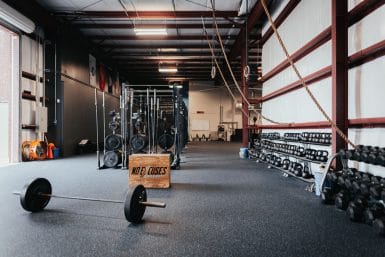
As we age, our bodies undergo various changes, from a natural decline in muscle mass to a decrease in bone density. While these changes are a part of the aging process, they can lead to a decline in physical function, making everyday activities more challenging.
However, there’s a potent antidote to these challenges: strength training. Strength training isn’t just for the young and athletic; it’s a vital component of a healthy and vibrant life, especially for those over the age of 40.
Here are five compelling benefits of strength training and examples of strength training exercises that can help you stay active and strong as you age.
- Improved Muscle Mass and Metabolism
One of the most noticeable effects of aging is the loss of muscle mass, a condition known as sarcopenia. This natural decline in muscle tissue can lead to reduced strength and functionality. Strength training, however, has the power to reverse this trend. By engaging in regular resistance exercises, you can increase your muscle mass and boost your metabolism.
Example Exercise: Squats
Squats are a fantastic full-body exercise that targets the legs, glutes, and core. To perform squats, stand with your feet hip-width apart, lower your body by bending your knees and hips, and then return to a standing position. Start with bodyweight squats and gradually add weights as you become more comfortable.
- Enhanced Bone Health
Another age-related concern is the loss of bone density, which can increase the risk of fractures and osteoporosis. Strength training can help preserve and even increase bone density by putting stress on your bones in a controlled manner. This stress stimulates the bones to become denser and stronger.
Example Exercise: Deadlifts
Deadlifts are a compound exercise that engages multiple muscle groups and is excellent for building bone density. To perform a deadlift, stand with your feet hip-width apart, bend at your hips and knees to lower yourself to the barbell, and then lift the barbell while keeping your back straight and chest up. Proper form is crucial to avoid injury.
- Enhanced Joint Health and Flexibility
As we age, joints can become stiffer and less flexible, leading to discomfort and reduced mobility. Strength training, when done correctly, can promote joint health by strengthening the muscles around the joints and improving their stability and range of motion.
Example Exercise: Yoga
While yoga may not involve traditional weights, it’s an excellent form of strength training that focuses on bodyweight resistance and flexibility. Many yoga poses, like Downward-Facing Dog and Warrior II, can help improve joint health and flexibility.
- Better Posture and Balance
Aging often comes with postural issues and balance problems, which can increase the risk of falls and injuries. Strength training helps correct posture by strengthening the muscles responsible for maintaining an upright position. Additionally, it enhances balance, reducing the likelihood of accidental falls.
Example Exercise: Planks
Planks are a core-strengthening exercise that can improve posture and balance. To do a plank, get into a push-up position with your elbows directly under your shoulders, engage your core, and hold the position for as long as you can. Start with shorter durations and work your way up.
- Mental Health and Cognitive Benefits
Strength training doesn’t just benefit your physical health; it also has profound effects on mental well-being. Engaging in regular strength training releases endorphins, which can help reduce stress and improve your mood. Additionally, some studies suggest that strength training may have cognitive benefits, including enhanced memory and cognitive function.
Strength training is a powerful tool that can positively impact your life, no matter your age. For those over 40, it becomes even more critical as it can help combat the natural effects of aging. By incorporating strength training exercises into your routine, you can enjoy improved muscle mass, better bone health, enhanced joint function, superior posture and balance, and even mental health benefits.
Remember that it’s crucial to start slowly and consult with a healthcare professional or fitness expert before beginning a new exercise regimen, especially if you have preexisting health conditions. With dedication and consistency, you can harness the ageless power of strength training to lead a healthier, more active, and fulfilling life as you age.
